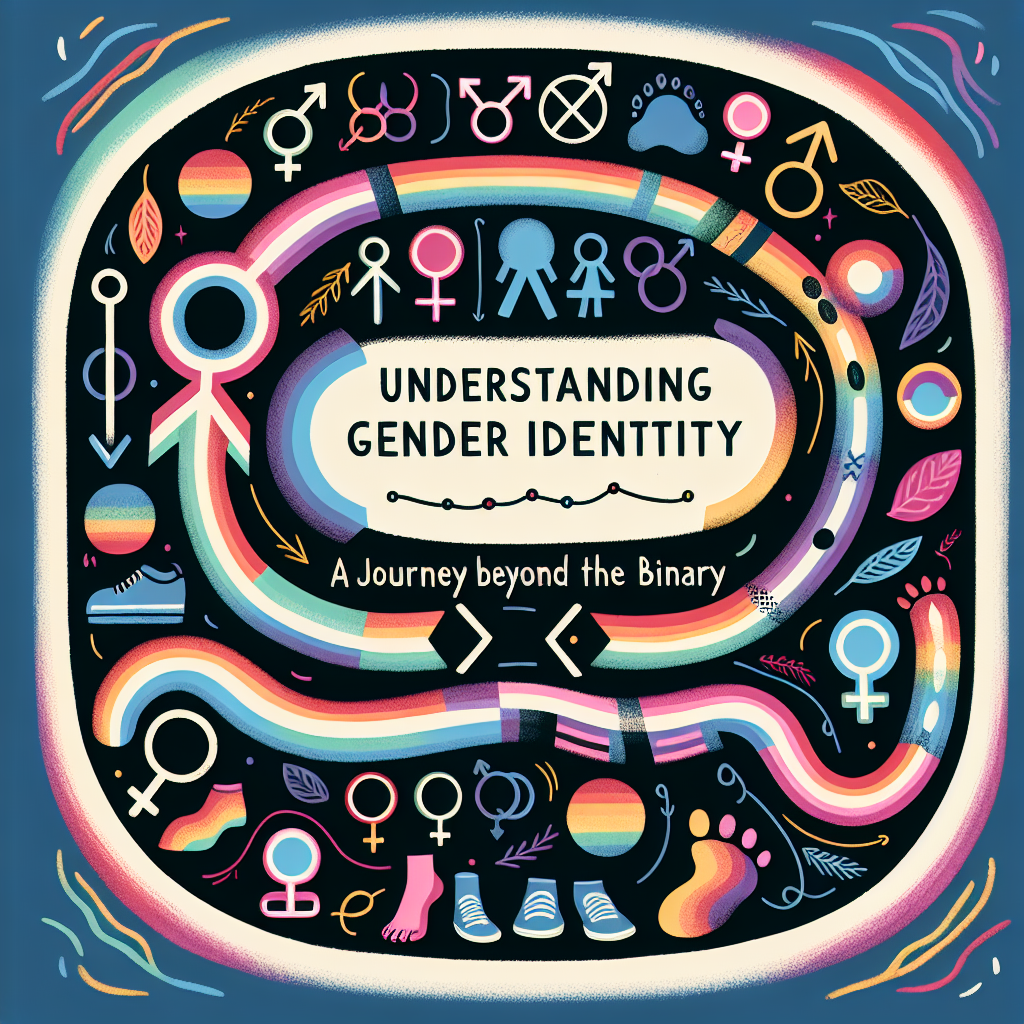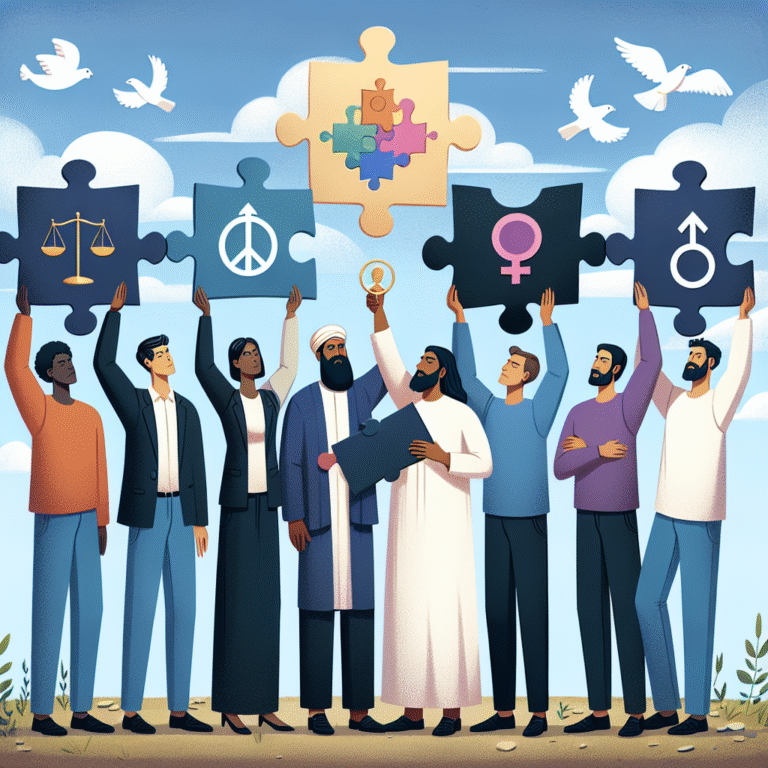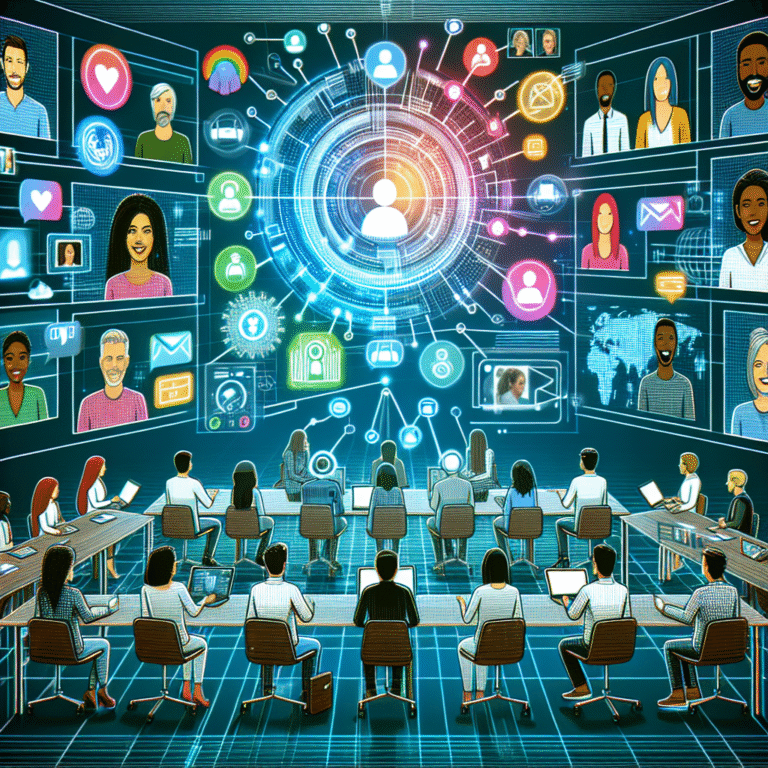
Introduction
In recent years, conversations around gender identity have surged to the forefront of societal discourse. The traditional view, which defines gender strictly as male or female, struggles to encapsulate the rich tapestry that is human identity. Today, we’re embarking on a crucial exploration—Understanding Gender Identity: A Journey Beyond the Binary. This journey not only challenges the conventional binary perspective but also affirms the experiences of countless individuals navigating their identities in a world that often finds it difficult to adapt.
As we venture deeper into this topic, we’ll uncover the significance of gender identity, the nuances of non-binary experiences, and the importance of fostering a more inclusive society. Through thought-provoking case studies and insightful data, you’ll gain a well-rounded understanding of how gender identity encompasses more than the simple categories of male and female.
The Foundations of Gender Identity
What is Gender Identity?
Gender identity refers to an individual’s internal sense of their gender, which may align with the sex they were assigned at birth or may differ from it. While many people identify strictly as male or female, others find that these categories do not adequately represent their experience. Thus, gender identity can exist along a spectrum that includes non-binary, agender, genderqueer, and numerous other identities.
Key Terminology to Know
Understanding gender identity involves familiarizing yourself with specific terms that define various experiences. Here’s a quick breakdown:
| Term | Definition |
|---|---|
| Cisgender | Individuals whose gender identity aligns with their assigned sex at birth. |
| Transgender | Individuals whose gender identity differs from their assigned sex at birth. |
| Non-Binary | Individuals who do not identify strictly as male or female. |
| Genderqueer | A term that might encompass a variety of gender identities outside the binary. |
| Agender | Individuals who do not identify with any gender. |
The Importance of Understanding Gender Identity
Understanding gender identity is not merely an academic exercise; it has profound implications for empathy, policy, and community. Misunderstanding, stigma, and discrimination can have dire consequences for those whose identities are marginalized. The more we understand gender identity, the more we can ensure a respectful and inclusive society.
The Spectrum of Gender
Beyond the Binary: Non-Binary Identities
Understanding Gender Identity: A Journey Beyond the Binary invites us to recognize that many individuals do not fit neatly into the male or female categories. Non-binary people may identify as a mix of both genders, neither, or may shift between genders.
Case Study: Alex’s Journey
Take the case of Alex, a 28-year-old graphic designer. Alex identifies as non-binary and uses they/them pronouns. For many years, Alex felt compelled to conform to societal expectations of gender. It wasn’t until a supportive community online offered validation that Alex began exploring their identity openly. By understanding their non-binary identity, Alex fostered greater self-acceptance, ultimately influencing their professional interactions and relationships.
Analysis: Alex’s story exemplifies the vital space for identity exploration in a supportive environment. This illustrates how communities can aid in forging self-understanding, ultimately contributing to mental well-being.
The Science of Gender Identity
Biological Influences on Gender Identity
Research indicates that gender identity can relate to a combination of biological, genetic, and environmental factors. Neurological studies have shown structures in the brain that correlate with gender identity, suggesting that gender is a more intrinsic component of who we are than previously acknowledged.
Table: Key Brain Structures and Gender Identity
| Structure | Associated Gender Identity |
|---|---|
| Hypothalamus | Size differences linked to gender identity |
| Corpus Callosum | Variations in thickness corresponding with gender identity distinctiveness |
Psychological Aspects
Psychologically, gender identity is often discussed in terms of gender dysphoria—a condition where an individual experiences distress due to a discrepancy between their experienced or expressed gender and their assigned sex at birth. Treatment options, including therapy and medical interventions, can affirm an individual’s gender identity.
The Social Context of Gender Identity
Cultural Perspectives on Gender
Global cultural contexts illustrate that perceptions of gender are fluid. Cultures worldwide have long recognized gender plurality. The hijra of South Asia, the fa’afafine of Samoa, and the Two-Spirit people among Indigenous cultures in North America are just a few examples of recognized identities beyond the man-woman binary.
Case Study: The Hijra Community in India
In India, hijras are recognized as a third gender and have a rich historical presence. They are often considered auspicious and participate in significant cultural ceremonies. However, they have also faced severe discrimination and marginalization. Understanding gender identity in this context brings attention to the intersectionality of culture, identity, and advocacy.
Analysis: The hijra community’s history demonstrates that the recognition of non-binary identities is not a new phenomenon but rather a part of cultural heritage. However, modern challenges persist, requiring societal support.
The Importance of Language
Pronouns and Their Impact
Language plays a crucial role in affirming gender identity. Using correct pronouns (he/him, she/her, they/them) is vital to recognizing individuals’ identities. Misgendering can lead to feelings of invalidation and distress.
A Quick Guide to Pronouns
| Pronoun | Example | Usage |
|---|---|---|
| He | "He is a teacher." | Used for those identifying as male. |
| She | "She is an artist." | Used for those identifying as female. |
| They | "They are my friend." | Used for non-binary individuals. |
The Role of Media and Representation
Media representation plays a significant role in shaping societal understanding of gender identity. Positive portrayals of diverse identities help foster acceptance and understanding. Recent television series and films increasingly feature non-binary characters, which can normalize these identities in mainstream culture.
Creating an Inclusive Society
Education and Awareness
Education is pivotal in cultivating an inclusive environment. Schools and workplaces should implement diversity training to address gender identity issues, fostering respect and understanding. Encouraging conversations around gender identity can break down barriers and stigmas.
Case Study: A Workplace Diversity Initiative
A tech company implemented a diversity initiative that included workshops focused on gender identity. Employees engaged in discussions about the importance of pronouns and supporting co-workers who identify outside of the binary. As a result, the organization fostered a culture of increased empathy and understanding.
Analysis: This initiative not only educated employees but also improved workplace morale. It demonstrates that understanding gender identity can enhance collaboration and respect.
Policy Changes and Advocacy
Advocating for inclusive policies at institutional and governmental levels is crucial. Policies that protect against discrimination based on gender identity contribute to affirming individuals’ rights and safety. Movements advocating for non-binary inclusivity can lead to significant societal change.
Conclusion
Understanding Gender Identity: A Journey Beyond the Binary is vital in recognizing the complexities of human identity. As we embrace this journey, we uncover the importance of compassion, representation, and inclusivity. By fostering education and understanding, we can contribute to a society where every individual is respected, valued, and free to express their authentic selves.
As we move forward, remember that empathy is key. Encourage conversations about gender identity in your community, educate yourself on different experiences, and support organizational efforts for inclusivity. Empowering others to live authentically not only enriches our social fabric but also affirms our shared humanity.
FAQs
1. What does it mean to be non-binary?
Non-binary is an umbrella term for any gender identity that does not fit within the traditional binary of male and female. It may encompass identities such as genderqueer, agender, and genderfluid.
2. How can I support a friend who is exploring their gender identity?
You can offer support by listening without judgment, using their chosen name and pronouns, and encouraging them to express themselves authentically. It is also helpful to educate yourself about gender identity.
3. What is gender dysphoria?
Gender dysphoria is a psychological condition wherein individuals experience significant discomfort due to a mismatch between their gender identity and assigned sex at birth. Medical and therapeutic support may be beneficial.
4. Can someone’s gender identity change over time?
Yes, gender identity can be fluid. Some people may explore and discover their identities over time, and it’s essential to respect their journey and any shifts they may experience.
5. How can organizations create a more inclusive environment for diverse gender identities?
Organizations can implement diversity and inclusion training, adopt policies that protect against discrimination, offer gender-neutral restrooms, and provide opportunities for employees to express their gender identities openly.
In our quest for a society that embraces diversity, Understanding Gender Identity: A Journey Beyond the Binary becomes not only an essential element for personal growth but an extended invitation to foster community, solidarity, and awareness. Together, we can champion a world where everyone feels seen, heard, and celebrated.

















